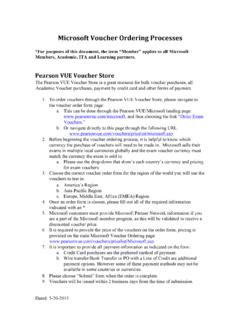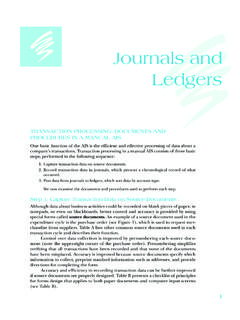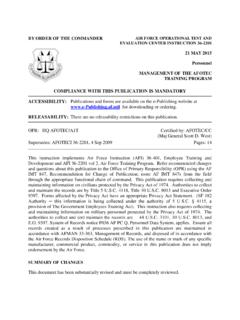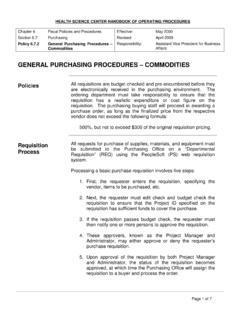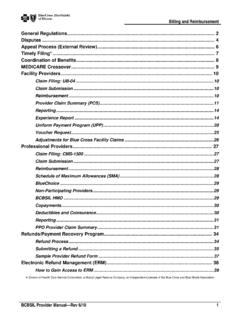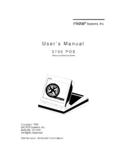Transcription of PHARMACY TECHNICIAN - AF
1 QTP4P0X1-6. 26 July 2018. PHARMACY TECHNICIAN . Controlled Substances Management OPR: SMSgt Chantel Libby SMSgt Matilda Mahone Maj Scott Olech 1. TABLE OF CONTENTS. MODULE OBJECTIVE PAGES. 1. Controlled Substance Management 3 24. 2. INTRODUCTION. 1. This Qualification Training Package (QTP) was developed to enhance and standardize on-the- job training for 4P0X1 personnel. As a trainer, the QTPs provide teachable elements of task breakdowns. The teachable elements will assist in guiding the trainee towards independent task performance, proficiency, and serve as an evaluation tool for trainers/certifiers. 2. Review the volume(s) of the Career Development Course(s) (CDCs) and identify which module(s) of the QTP is needed for the trainee's job position or upgrade skill-level training.
2 The QTP training for each module should be accomplished in the order which most closely mirrors the area in which the trainee is working. Items in column 2 of the PHARMACY Job Qualification Standard (JQS)/Specialty Training Standard (STS) marked with a 5 or 7 are core tasks for the 4P. career field. Additional proficiency training may be required for these tasks at the supervisor's discretion. 3. Ensure the trainee reviews the training references in each module prior to attempting any task or QTP evaluation. Review the performance checklist and training objective with the trainee. If the trainee has questions about the objective, clarify the desired outcome/results of performance, demonstration or completion of the task.
3 Remember the objective of each QTP is to standardize training and allow sufficient time for the trainee to learn each task thoroughly to be able to perform the task independently. 4. When the trainee has received sufficient training and is ready to be evaluated on the objective, follow the evaluation instructions. The performance checklist must be used as you evaluate each task objective. When the trainee successfully demonstrates and accomplishes the objective, document the task completion appropriately in the member's Air Force Training Record (AFTR). 5. The QTP task completion is to be annotated as a 623A comment in the trainee's AFTR. NOTE: The individual checklists and final evaluations are not filed in each member's user files.
4 6. If the trainee does not accomplish the objective, review the areas needing further instruction. Conduct feedback for each module with the trainee, and document appropriately in the member's AFTR. The trainee will be re-evaluated until the objective is met. 7. If a task being trained requires third party certification by a certifier/certifying official, the trainer ensures trainee is qualified to perform the task independently. The trainee will then be evaluated by certifier/certifying official. Tasks requiring certification are identified in column 2. of JQS with a number sign (#). The certifier/certifying official will ensure that a trainer has signed off the task in the trainer column prior to signing off the task in the certifier column in AFTR.
5 3. 8. Tasks associated with a QTP are identified in column 4D of the STS. The QTPs are a necessary tool for standardizing task qualifications for upgrade training or job position training. Such standardization benefits the JQS training concept throughout a member's career. These documents may also be used in assessing/certifying PHARMACY technicians upon arrival at a new duty station. 9. Feedback is a vital and important part of improving our educational process for PHARMACY technicians. Your first hand expertise is valued and your feedback is highly encouraged to ensure we have the most up-to-date information and training possible. Trainees should direct all inquiries to their immediate supervisor.
6 4. SUBJECT AREA: Controlled Substances Management TASK NAME(S): Procedures: Adding new drug to CHCS; New Issue Entry; Decrement from Controlled Inventory; Add to Controlled Inventory; Adjust to Inventory; Complete RX. Transaction; Return RX Transaction; Remove RX Transaction; Cancel a Prescription;. Discontinue a Prescription JQS/STS REFERENCE(S): ; ; ; ; ; ; EQUIPMENT REQUIRED: 1. Composite Healthcare System (CHCS). 2. Vault 3. Controlled Substances TRAINING REFERENCES: AFI 44-102, Medical Care Management; CDC 4P051A, Volume 3; CHCS User's Manual;. PHARMACY Practice Manual; PHARMACY Law Digest; AFMAN 23-101; Air Force Medical Management; AFI 31-101, Integrated Defense (FOUO); AFI 41-209, Medical Logistics Support REMARKS/NOTES: Controlled Substances Management is vital to compliance with all guidelines and the success of accreditation inspections.
7 Reports for CII and CIII - V medications must be filed separately. Trainees must have Narcotic System Reports key enabled by Systems (or Database Administrator) to perform task(s). OBJECTIVE: 1. Effectively and accurately manage controlled substances according to Air Force, Federal, State, and local laws/instructions. EVALUATION INSTRUCTIONS: 1. After the trainee has received instructions, allow sufficient practice on each part of the task. 2. Use the performance checklist to ensure all steps of the task are accomplished without assistance and without error. 3. Document task competency upon completion of the evaluation in the trainee's AFTR. The initial evaluation should be documented in AFTR as a part of upgrade training.
8 All recurring evaluations should also be documented as a 623A comment in the trainee's AFTR. STEPS IN TASK PERFORMANCE: 5. 1. Identify appropriate need and information required to Add a new drug into CHCS; Issue a New Entry; Decrement Controlled medication from Inventory; Add Controlled to Inventory;. Adjust Inventory; Complete RX Transaction; Return RX Transaction; Remove RX Transaction;. Cancel a Prescription, Discontinue a Prescription. 2. Insert pertinent information in required fields in CHCS. ATTACHMENT(S): None 6. PERFORMANCE CHECKLIST: PROCEDURES. PERFORMANCE ITEMS SAT UNSAT. 1. Add New Drug to Formulary (ADN). Summary: This function is used to add a new drug into CHCS.
9 NOTE: There are two additional steps needed to successfully add controlled items to the inventory, those include formulary maintenance (FRM) and adding the medication to the controlled inventory record (CIR). a. Identify appropriate need and information required to add medication to the formulary b. Follow menu path - SFM - FOM - ADN. c. Drug name d. NDC. e. Route f. Dosage strength g. Content unit h. Dosage form i. Drug check j. Legal status k. Label print name l. Synonym m. Drug type (inpatient data). n. Drug type o. Drug Authorization key (under ordering restrictions enter doc if POE). 2. New Issue Entry (NEW). Summary: This function is used to issue new controlled item orders.
10 A. Identify appropriate need and information required to inquire about a controlled item issue b. Receive order/issue request c. Follow menu path - NSM {Enter Site} ISM - NEW. d. (P)ackage or (I)nventory e. Medication f. Requestor's Name g. Issue to Location h. Units Dispensed i. Received by j. Expiration Date of Product 7. k. Manufacturer l. Lot Number m. Device 3. Decrement from Controlled Inventory (DCI). Summary: This function is used to decrement from controlled inventory a. Identify appropriate need and information to decrement from controlled inventory (return medication to medical logistics). b. Follow menu path - NSM {Enter Inventory Site} INV - DCI. c. Voucher number for medication d.










